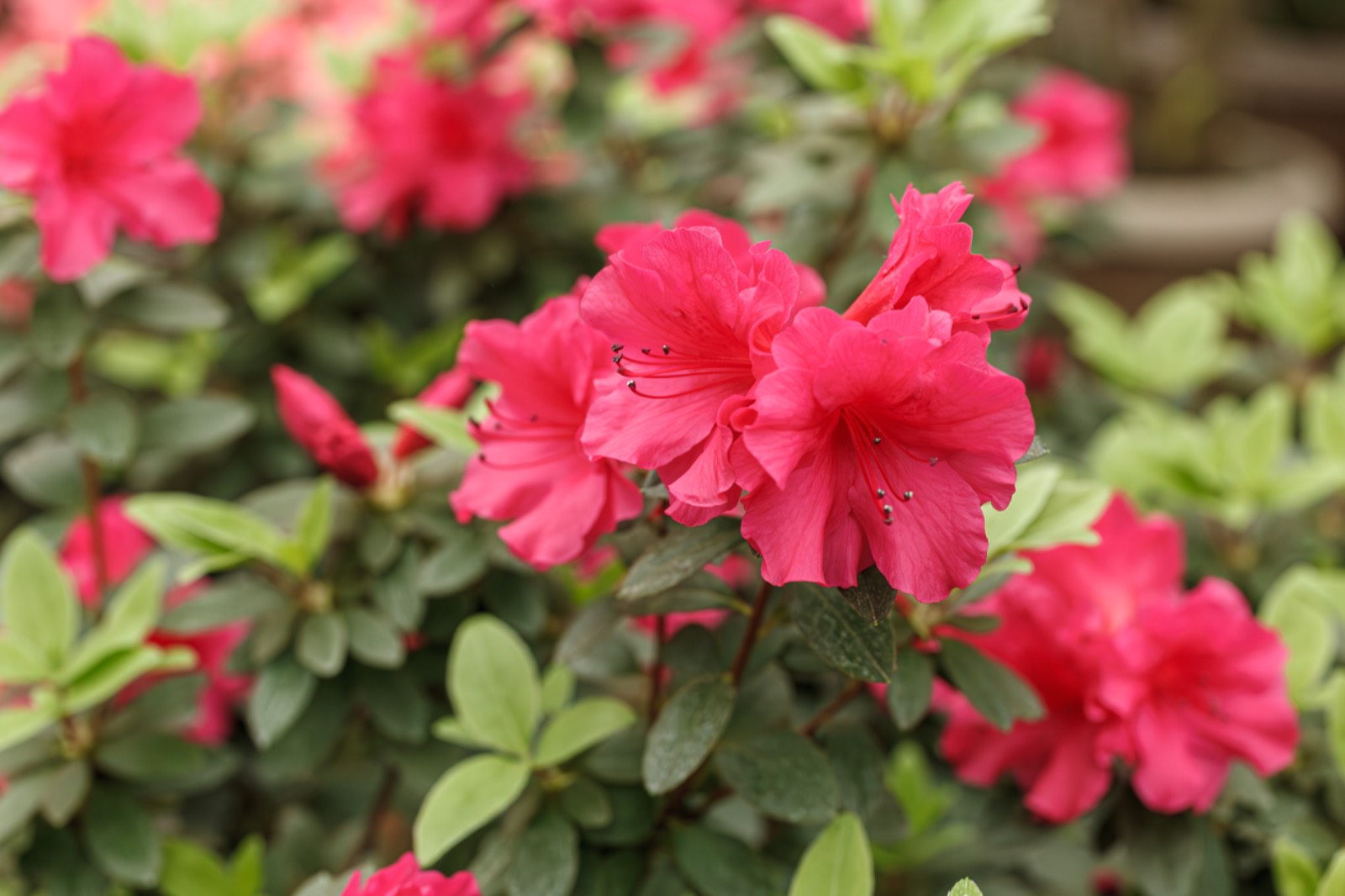Marietta, Georgia, with its warm Southern charm and vibrant spring season, is practically synonymous with stunning azaleas. These flowering shrubs erupt in a kaleidoscope of colors, transforming landscapes into breathtaking displays. Whether you’re a seasoned gardener or a newbie nurturing your first blooms, this guide offers everything you need to know about planting and caring for azaleas in Marietta, GA.
Selecting the Perfect Azalea for Marietta’s Climate
Marietta boasts a humid subtropical climate with hot, humid summers and mild winters. This makes it ideal for several varieties of evergreen and deciduous azaleas. Here are some popular choices to consider:
- Evergreen Azaleas: These azaleas retain their foliage throughout the year, providing year-round visual interest. Popular varieties include:
- Southern Indica: Known for its large, fragrant blooms in shades of red, pink, white, and purple.
- Osakasuki: A compact variety with vibrant red blooms that appear in late spring.
- Satsuki: A slow-growing azalea prized for its delicate flowers and long blooming season.
- Deciduous Azaleas: These azaleas lose their leaves in fall, offering a spectacular display of autumn colors before winter dormancy. Popular varieties include:
- Korean Azalea: A fast-growing variety with clusters of small, vibrant pink flowers in early spring.
- Flame Azalea: Showcases fiery orange-red blooms in late spring.
- Ghent Azalea: Offers a diverse range of flower colors, including bi-colored varieties, and blooms in mid-spring.
Pro Tip: When choosing your azalea, consider factors like desired bloom time, flower color, plant size, and sun exposure needs. Local nurseries can offer expert advice on varieties that thrive in Marietta’s specific climate.
Planting Your Azalea for Success
The key to a healthy, thriving azalea lies in proper planting. Here’s a step-by-step guide:
- Timing is Key: Fall (from October to November) is the ideal planting time for azaleas in Marietta. This allows the roots to establish themselves before the hot summer months.
- Choosing the Right Spot: Azaleas prefer dappled shade, receiving some morning sun and protection from the afternoon heat. Avoid planting them under trees that compete for water and nutrients.
- Preparing the Soil: Azaleas require well-draining, acidic soil (pH between 4.5 and 6.0). If your soil is not naturally acidic, you can amend it with peat moss, composted pine bark, or organic matter.
- Digging the Hole: Make sure the hole you dig is about two to three times wider and deeper than the root ball of your azalea.
- Planting: Gently loosen the root ball of your azalea and place it in the hole. Ensure the top of the root ball sits slightly above the surrounding soil level.
- Backfilling and Watering: Backfill the hole with the amended soil, tamping it down gently to eliminate air pockets. Water thoroughly to settle the soil around the roots.
Caring for Your Marietta Azaleas
With proper care, your azaleas will reward you with years of dazzling blooms. Here are some essential maintenance tips:
- Watering: Water your azaleas regularly, especially during dry periods. Aim for deep watering that soaks the root zone without creating waterlogged conditions.
- Mulching: Apply a 2- to 3-inch layer of mulch around the base of your azalea to retain moisture, regulate soil temperature, and suppress weeds.
- Fertilizing: Fertilize your azaleas with a fertilizer specifically formulated for acid-loving plants. Apply it in early spring, just before new growth appears, and follow the manufacturer’s instructions.
- Pruning: Prune your azaleas after they finish blooming to encourage bushier growth and improve flower production for the following season. Remove dead, diseased, or overcrowded branches.
Pro Tip: Deadheading, which involves removing spent blooms, can also encourage additional flowering throughout the season.
Addressing Common Azalea Problems in Marietta
While azaleas are relatively low-maintenance plants, they can be susceptible to certain issues:
- Azalea Lace Bug: These tiny insects suck the sap from azalea leaves, causing yellowing and stippling. Insecticidal soap sprays can be effective in controlling them.
- Fungal Diseases: Fungal diseases like powdery mildew and leaf spot can cause discoloration and defoliation. Improve air circulation around your plants and use fungicides if necessary.
- Nutrient Deficiencies: Iron deficiency can manifest as yellowing leaves with green veins. Apply chelated iron

